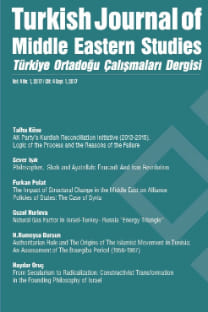The Art of Resistance in the Palestinian Struggle Against Israel
Street Art, Palestine, Israel, Resistance
___
- Achar, Gilbert. The Arabs and the Holocaust: The Arab-Israeli War of Narratives. London: Saqi Books, 2010.
- Alatout, Samer. “Walls As Technologies of Government: The Double Construction of Geographies of Peace and Conflict in Israeli Politics, 2002–Present”, Annals of the Association of American Geographers, Vol. 99, No. 5, (2009): 956-968.
- Boullata, Kamal. “Art under Siege”, Journal of Palestine Studies, Vol. 33, No. 4, (2004): 70-84.
- Boullata, Kamal. “Artists Re-Member Palestine in Beirut”, Journal of Palestine Studies, Vol. 32, No. 4, (2003): 22-38.
- Bourdieu, Pierre. Language and Symbolic Power. Cambridge, Polity Press: 1991.
- “Daily life in Gaza – in Pictures”. 8 June 2012, https://www.theguardian.com/world/gallery/2012/jun/08/daily-life-gaza-in-pictures.
- De Certeau, Michel. The Practice of Everyday Life. Berkeley: University of California Press, 1984.
- Deleuze, Gilles. “Stones”, David Lapoujade (ed.), in Two Regimes of Madness: Texts and Interviews 1975-1995, New York: Semiotext(e), 2007, 338-340.
- Deleuze, Gilles and Guattari, Felix. A Thousand Plateaus. Trans. Brian Massumi. London: Continuum, 2012.
- Editorial Board. “Visual Culture and Remembering the Forgotten”, Jerusalem Quarterly, Vol. 61, (2015): 3-5.
- Gal-Ezer, Miri. “The Third Space? From Modern Art Gallery to Modern Museum in Umm El-Fahem”, Emanuela Trevisan Semi, Dario Miccoli and Tudor Parfitt (eds.), in Memory and Ethnicity: Ethnic Museums in Israel and the Diaspora, New Castle: Cambridge Scholars Publishing, 2013, 121-168.
- Gould, Rebecca. “The Materiality of Resistance: Israel’s Apartheid Wall in an Age of Globalization”, Social Text 118, Vol. 32, No 1, (2014): 1-22.
- Gramsci, Antonio. Selections from the Prison Notebooks of Antonio Gramsci. Trans. Quintin Hoare and Geoffrey Nowell Smith. New York: International Publishers, 1971.
- Hasson, Nir. “'First Monumental Zionist Work of Art' Uncovered in Jerusalem”, Haaretz, 15 October 2012, https://www.haaretz.com/.premium-reviving-the-first-monumental-zionist-artwork-1.5192847.
- Jannol, Hannah. “Banksy in the West Bank: Whose Art Is It Anyway?”, 13 July 2018, https://www.jweekly.com/2018/07/13/banksy-in-the-west-bank-whose-art-is-it-anyway/.
- Khalili, Laleh. Heroes and Martyrs of Palestine: The Politics of National Commemoration. New York: Cambridge University Press, 2007.
- Larkin, Craig. “Jerusalem’s Separation Wall and Global Message Board: Graffiti, Murals, and the Art of Sumud”, The Arab Studies Journal, Vol. 22, No. 1, Special Issue: Cultures of Resistance, (2014): 134-169.
- Lovatt, Hugh. “From National Resistance to Global Movement – An Intro to Palestinian Graffiti (PHOTOS)”, 3 March 2015, https://yourmiddleeast.com/2015/03/03/from-national-resistance-to-global-movement-ae-an-intro-to-palestinian-graffiti-photos/.
- Mac Greigair, Gawan. “Nazareth's Mystery Mural as an Emblem of Palestinian Resistance”, 2 November 2107, https://www.alaraby.co.uk/english/indepth/2017/11/13/nazareths-mystery-mural-as-an-emblem-of-palestinian-resistance.
- Manor, Dalia. Art in Zion: The Genesis of Modern National Art in Jewish Palestine. London: Routledge, 2005.
- Masalha, Nur. “Naji al-Ali, Edward Said and Civil Liberation Theology in Palestine”, Holy Land Studies, Vol. 11, No. 2, (2012): 109-134.
- Massad, Joseph. “Permission to Paint: Palestinian Art and the Colonial Encounter”, Art of Journal, Vol. 66, No. 3, (2007): 126-133.
- Medien, Kathryn. “Palestine in Deleuze”, Theory, Culture & Society, Vol. 36, No. 5, (2019): 1-22.
- Mouffe, Chantal. “Hegemony and Ideology in Gramsci”, Chantal Mouffe (ed.), in Gramsci and Marxist Theory, London: Routledge & Kegan Paul, 1979, 168-204.
- Mouffe, Chantal et al. “Every Form of Art Has a Political Dimension”, Grey Room, Vol. 2, (2001): 99-125.
- Musleh, Maath. “Taking Back Palestine’s Sreets: Exclusive Interview with Underground Jerusalem Graffiti Artist”, 29 August 2012, https://electronicintifada.net/content/taking-back-palestines-streets-exclusive-interview-underground-jerusalem-graffiti-artist.
- “Palestinians to Netanyahu: You Will Never Break Our Will”, The Jerusalem Post, 11 September 2019, https://www.jpost.com/Israel-News/Palestinians-to-Netanyahu-You-will-never-break-our-will-601398.
- Parry, William. Against the Wall: Art of Resistance in Palestine. Chicago: Lawrence Hill Books, 2010.
- Perlmutter, David D. “Photojournalism and Foreign Affairs”, Orbis, Vol. 49, No 1, (2005): 109-122.
- Peteet, Julie. “The Writing on the Walls: The Graffiti of the Intifada”, Cultural Anthropology, Vol 11, No 2, (1996): 139-159.
- Saad, Rhonda A. “Palestinian Art: From 1850 to the Present by Kamal Boullata”, The Arab Studies Journal, Vol. 18, No. 1, (2010): 330-333.
- Said, Ben. “Protest Art: Is Graffiti on the West Bank Wall Losing Its Meaning?”, 4 November 2017, https://www.trtworld.com/mea/protest-art-is-graffiti-on-the-west-bank-wall-losing-its-meaning--11931.
- Shapiro, Michael J. Methods and Nations: Cultural Governance and the Indigenous Subject. London: Routledge, 2004.
- Shavit, Ari. “An Interview with Edward Said”, Politics and Culture, Vol. 3, (2000), https://politicsandculture.org/2010/08/10/an-interview-with-edward-said-2/.
- Sternhell, Zeev. Nationalism, Socialism, and the Making of the Jewish State. Trans. David Maisel. Princeton: Princeton University Press, 1998.
- Toenjes, Ashley. “This Wall Speaks: Graffiti and Transnational Networks in Palestine”, Jerusalem Quarterly, Vol. 61, (2015): 55-68.
- Tripp, Charles. The Power and the People: Paths of Resistance in the Middle East. New York: Cambridge University Press, 2013.
- Weizman, Eyal. Hollow Land: Israel’s Architecture of Occupation. London: Verso, 2007.
- Wiles, Rich. “Palestinian Graffiti: 'Tagging' Resistance”, 26 November 2013, http://www.aljazeera.com/indepth/features/2013/11/palestinian-graffiti-tagging-resistance-2013112015849368961.html.
- ISSN: 2147-7523
- Yayın Aralığı: 2
- Başlangıç: 2014
- Yayıncı: Talha İsmail Duman
Ali BİLGENOĞLU, Hikmet MENGÜASLAN
İsrail’e Dönük Filistin Mücadelesinde Direniş Sanatı
Mısır’da Devrim ve Karşı Devrim: Dış Aktörlerin Rolü
YÜKSELİŞTEN KRİZE KATAR YÖNETİMİNDE LİDERLİK
Ali BİLGENOĞLU, Hikmet MENGÜASLAN
GÖÇEBELER VE DAĞLILAR: TÜRK/TÜRKMEN – KÜRT İLİŞKİLERİNİN KİMLİK TEMELLİ TARİHSEL BİR İNCELEMESİ
Türk-Arap İlişkileri: Eski Eyaletler Yeni Komşulara Dönüşürken (1914-1923)
The Art of Resistance in the Palestinian Struggle Against Israel
Revolution and Counter-Revolution in Egypt: The Role of External Actors
